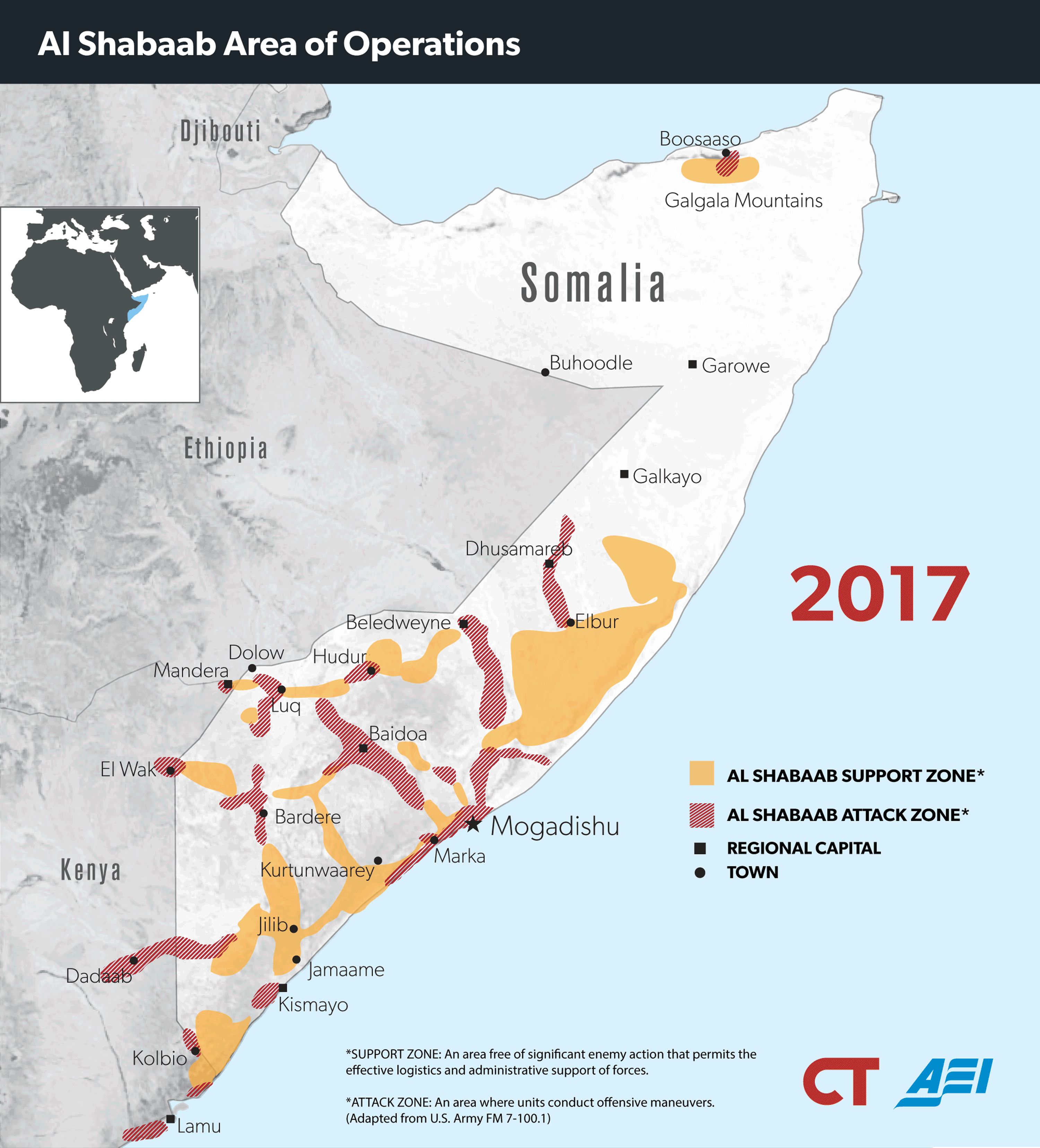{{currentView.title}}
January 15, 2019
The Fight Against al Shabaab isn’t Over
At least seven people were killed earlier today in a terrorist attack on an upscale hotel complex in Kenya’s capital, Nairobi. The bombing, claimed by al Shabaab, is reminiscent of a similar attack on Nairobi’s Westgate mall in September 2013. Why Kenya? Since 2011, Kenyan forces have been battling Islamist extremists at home in eastern Kenya and as part of African Union peacekeeping missions in Somalia, where terrorist safe havens are a beachhead for attacks in the region.
Notwithstanding today’s attack or al Shabaab’s clear strength, the African Union plans to end this peacekeeping mission and hand over security responsibilities to Somali forces by 2021. Think of this as yet another premature declaration of “Mission Accomplished.” Al Shabaab operates in nearly the same territory as it did in 2017 (Figure 1), and it will fill the security vacuum left as peacekeeping forces depart. Al Shabaab did just that when some Ethiopian units withdrew in 2016. Moreover, the Somali state remains fragile, with political issues inhibiting cooperation among regional Somali security forces, the Somali National Army, and regional governments. The US has responded with increased airstrikes, but airstrikes alone will not suffice.
 Figure 1: Al Shabaab maintained most of its territory in 2018 after a second year of escalated US military activity in Somalia.
Figure 1: Al Shabaab maintained most of its territory in 2018 after a second year of escalated US military activity in Somalia.Editor's NoteTHE TOWN OF ELBUR IN CENTRAL SOMALIA IS MEANT TO BE INCLUDED IN A SUPPORT ZONE IN THE 2018 MAP. AN UPDATE TO THE MAP IS FORTHCOMING ON THIS WEBSITE.Al Shabaab’s attacks make headlines, but the al Qaeda group offers something real to local Somalis. Perhaps incredibly, the group provides more efficient and less corrupt governance than the Somali Federal Government in some areas. Many Somalis prefer al Shabaab’s justice over the Somali courts—even traveling from government-controlled areas to al Shabaab-held areas to seek justice. Al Shabaab courts deliver a verdict faster and are more likely to enforce it. This benefit allows al Shabaab to maintain support and attack zones, despite U.S. airstrikes.
Why should the US commit resources to a far-away fight? Because al Shabaab and al Qaeda are part of a broader Salafi-jihadi movement that has spread across Africa, the Middle East, and South Asia. Like other groups, al Shabaab actively competes with the central government for local legitimacy by providing security and shari’a governance, threatening US allies and promoting a system of values at odds with the American way of life. And once they’re settled in Africa, we can be sure they’ll be on our doorstep once again. Far from walking away, the U.S. and its partners must address the governance deficit in Somalia and the broader region. Walking away is little more than surrender.
View the original al Shabaab area of operations maps here for 2017 and 2018.
